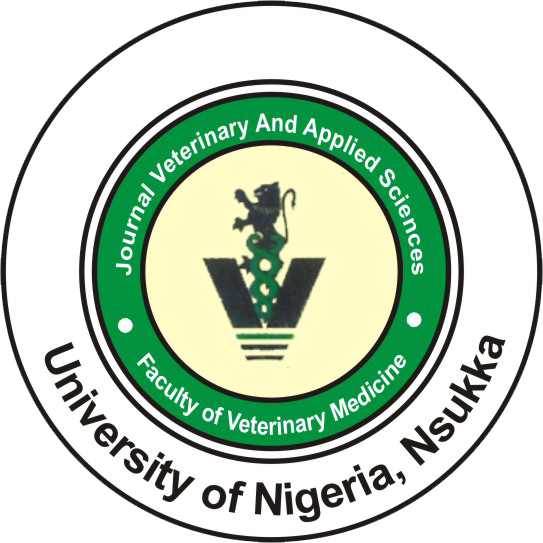University of Nigeria
ISSN: 2315 - 6856
e-ISSN: 2636 - 5553
Journal volumes
Powered by: RockSystems Global Services Ltd.
rocksystemsglobal@gmail.com (+2348035271306)
www.rocksystemsglobal.com
Volume 13, Issue 2: 2023 - Article 3
Evaluation of anti-trypanosomal activity of hydromethanol root extract of Carpolobia lutea in mice experimentally infected with Trypanosoma brucei
Chukwunonso F. Obi*, Nwamaka M. Uzonnah, Terry A. Nzeakor, Michael I. Okpala, Chijioke N. Iheagwam, Lucky U. Ekwereonu, Ikenna O. Ezeh and Romanus C. Ezeokonkwo
Department of Veterinary Parasitology and Entomology, Faculty of Veterinary Medicine, University of Nigeria, Nsukka, Enugu State, Nigeria.
Abstract
This study investigated the phytochemistry, toxicity, in vitro and in vivo anti-trypanosomal activities of Carpolobia lutea hydromethanol root extract (CLHmRE) in mice experimentally infected with Trypanosoma brucei. The acute toxicity and phytochemical studies on CLHmRE were carried out following standard methods. The in vitro anti-trypanosomal activity of CLHmRE was evaluated using eleven concentrations of the extract. Twenty-five mice were randomly assigned to five groups (A – E) of five mice each for the in vivo evaluation of the anti-trypanosomal activity. Groups A – D were infected intra-peritoneally with one million trypanosomes, while Group E served as the uninfected control group. Following parasitaemia detection, Groups A and B mice were given 100 mg/kg and 300 mg/kg of CLHmRE orally, respectively for 7 days, while Group C was given 7 mg/kg of diminazene aceturate injection once. Group D was the infected untreated control. The level of parasitaemia was assessed daily post-infection while the body weight and haematological parameters were evaluated before infection and at weekly intervals all through the experimental period, following standard procedures. The phytochemical studies revealed the presence in the CLHmRE of phenols, alkaloids, glycosides, reducing sugars, steroids, terpenoids and tannins. The CLHmRE was not acutely toxic to mice at a maximum oral dose of 2,000 mg/kg body weight. The IC50 of the extract was 0.196 mg/ml. Treatment of the infected mice with CLHmRE did not completely eliminate parasitaemia, but only significantly reduced (p < 0.05) the level of parasitaemia transiently between days 9 – 12 post infection. The extract also did not produce any significant (p > 0.05) improvement in the haematological parameters of the infected mice. It was concluded that CLHmRE is acutely safe but did not exhibit significant anti-trypanosomal activity at the doses used for the study. It was recommended that root extracts of Carpolobia lutea be further investigated at other doses for anti-trypanosomal activity or for other possible ethnomedical properties.
Keywords: Anti-trypanosomal activity; Carpolobia lutea extract; Mice; Phytochemistry; Toxicity; Trypanosoma brucei.
How to cite this article:
Obi CF, Uzonnah NM, Nzeakor TA, Okpala MI, Iheagwam CN, Ekwereonu LU, Ezeh IO and Ezeokonkwo RC (2023). Evaluation of anti-trypanosomal activity of hydromethanol root extract of Carpolobia lutea in mice experimentally infected with Trypanosoma brucei. Journal of Veterinary and Applied Sciences, 13(2): 190 – 201.
*Correspondence: E-mail: chukwunonso.obi@unn.edu.ng Phone: +2348063707096
Download .pdf copy here >>






